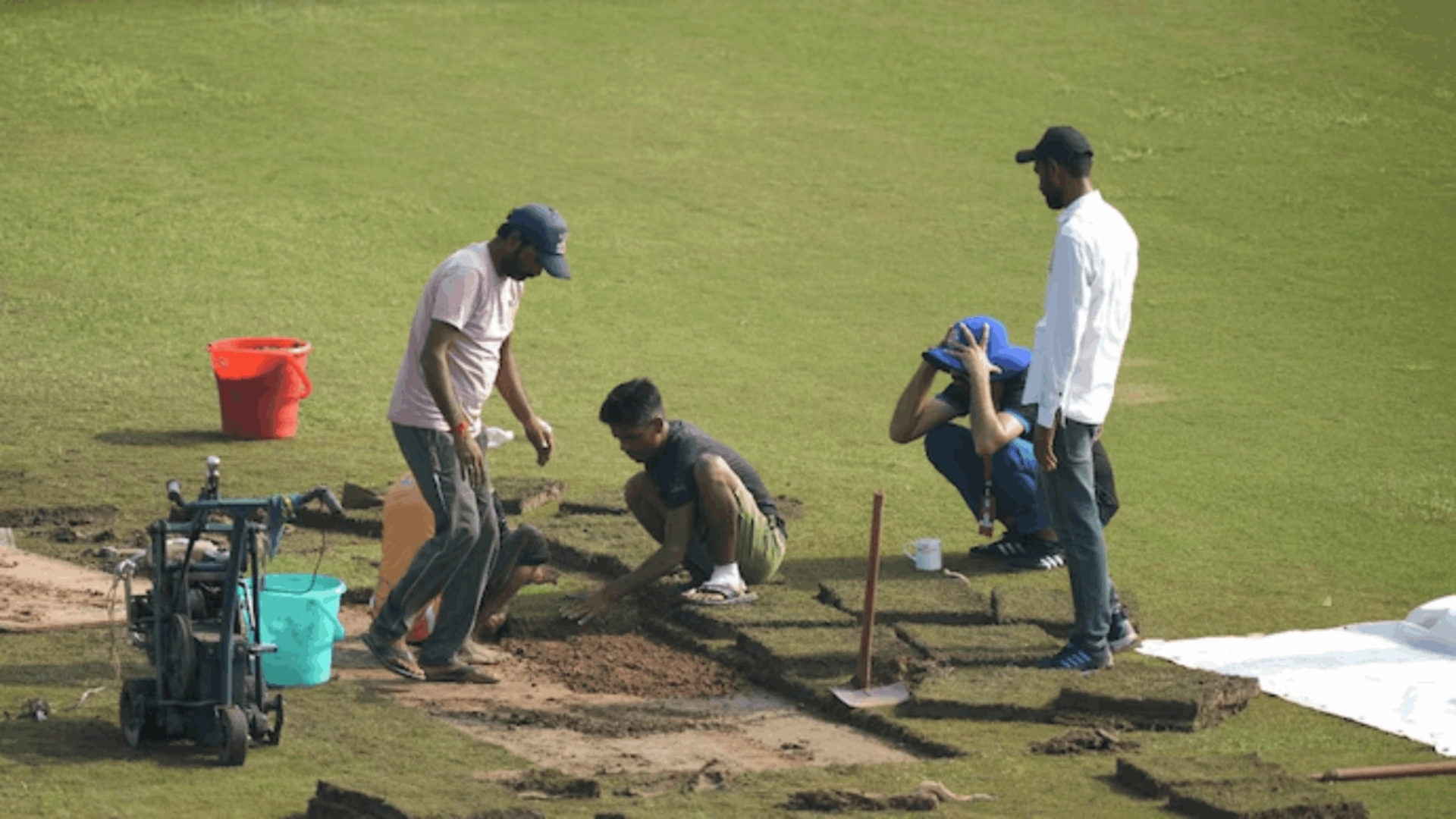The historic Test match between Afghanistan and New Zealand at the Shaheed Vijay Singh Pathik Sports Complex in Greater Noida has faced major controversies after two days of no play. This Test is notable as it marks the first red-ball international match at this venue and the first meeting between these two teams in a Test format. However, despite clear skies, the match has yet to see any action, with the toss still pending.
Ground Conditions: A Major Concern
The issues began when the match was scheduled to start. Although Greater Noida enjoyed sunshine on both days, the ground’s outfield was deemed unsafe due to excessive moisture. The situation deteriorated to the extent that Afghanistan’s star batter Ibrahim Zadran injured himself slipping on the wet surface during a training session. Organizers even resorted to using an electric fan and replacing a wet patch with fresh grass in a bid to prepare the ground.
Shocking Conditions Off the Field
Adding to the controversy, images emerged showing catering utensils being washed in a stadium washroom, raising questions about the venue’s overall management.
Why Is Afghanistan Playing in India?
The ongoing political situation in Afghanistan has prevented the country from hosting international cricket, compelling the Afghanistan Cricket Board (ACB) to arrange their home matches abroad. Although the UAE has been the usual venue, this Test match is the first in India in four years.
What Went Wrong with the Venue?
The troubles at Greater Noida are largely attributed to the venue’s inadequate drainage system and infrastructure. The stadium’s clay-based outfield struggled to handle the rain, and a lack of sufficient covers meant that some patches remained soaked. Cricbuzz reported that these conditions significantly hindered the ground’s readiness for play.
Stadium’s International Status and Issues
The Shaheed Vijay Singh Pathik Sports Complex, part of the Jaypee Group Sports City, was initially ambitious in its design, aiming for a capacity of up to 100,000. However, it was ultimately built to accommodate 8,000 spectators. After receiving international status from the ICC in 2016, the stadium has hosted various formats, including ODIs and T20Is, but had not seen Test cricket until now.
In 2017, the BCCI banned the stadium from hosting its affiliated private leagues due to match-fixing allegations, and since then, it has not hosted any BCCI-sanctioned matches. The Uttar Pradesh Cricket Association (UPCA) has also been sidelined from stadium operations, with the Greater Noida Industrial Development Authority now overseeing the venue.
Why Greater Noida?
Despite the issues, Greater Noida was chosen for this Test match due to logistical reasons. Menhajuddin Naz from the ACB explained that the BCCI offered a choice between Greater Noida, Kanpur, and Bengaluru. The decision to select Greater Noida was based on its proximity to Delhi, simplifying logistical arrangements.
As the Test match continues to face delays, the cricketing community watches closely to see if play will commence and how the situation will unfold.






















